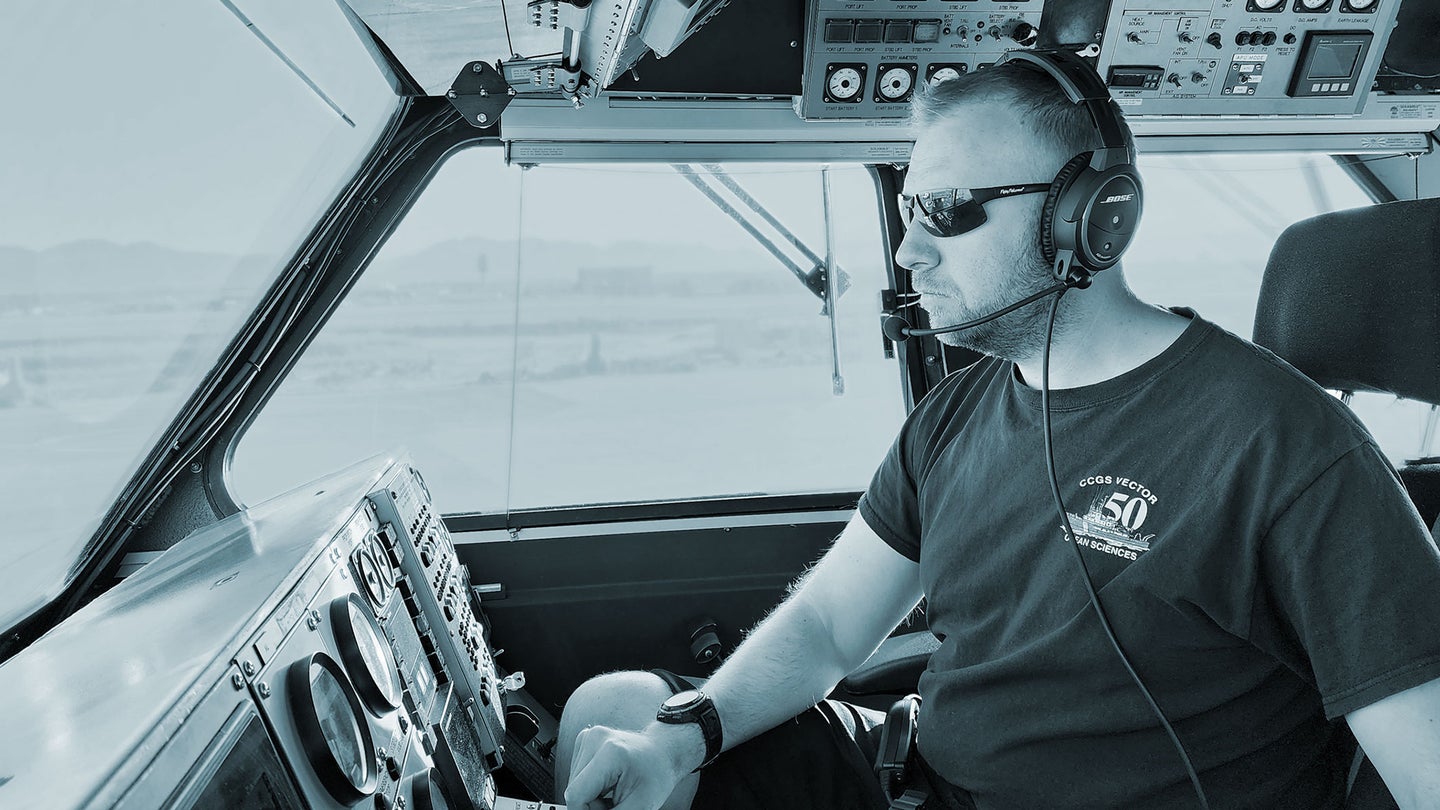What does a hovercraft operator do?
Ian Cragg speeds to the aid of people and vessels during emergencies at sea and on shore.

This article was originally featured on Hakai Magazine, an online publication about science and society in coastal ecosystems. Read more stories like this at hakaimagazine.com.
Some people work in cubicles, others work in kitchens, but the most intriguing workplace of all may be the coast. Meet the people who head to the ocean instead of the office in our Coastal Jobs series.
Ian Cragg pilots and navigates hovercraft as a first officer for the Canadian Coast Guard out of thehovercraft base near Vancouver, British Columbia, answering search-and-rescue calls across the province.
I joined the coast guard because I wanted to help people. I didn’t end up piloting hovercraft right off the bat; I spent years bouncing between different types of coast guard ships along the coast, from Washington to Alaska and everywhere in between. Hovercraft are rare and special. They’ve been discontinued in most commercial operations because they’re so expensive to make, but when it comes to search and rescue, they’re priceless.
From far away, a hovercraft looks like a normal boat. But if you look under the skirt of our CCGS Siyay, the craft is not touching the water—it floats on a cushion of air. That cushion allows us to travel over everything from water to muddy land—and even break through ice. We do all of that as a 70-tonne machine, going a maximum of nearly 120 kilometers per hour.
These features allow us to rescue a large number of people quickly, get onto land, and get someone into an ambulance far easier than with any other device I can think of. We can even have a small hospital on board with emergency personnel and equipment if the call requires it.
The advantages of hovercraft can also make them difficult to navigate. We’ve got a massive vehicle moving fast, sometimes in a dense fog bank up a narrow river. During assignments on other coast guard vessels, I had 20 minutes to make navigation alterations that would avoid a collision. In a hovercraft, I have 10 seconds. You have to have enough situational awareness to make the right decision every time.
A lot of people get in trouble in areas that can’t be accessed by conventional means. British Columbia’s geography is unique: a lot of mudflats, a lot of beaches. We recently did a call approximately 70 kilometers away in under an hour; it would have been impossible to get emergency equipment there so quickly with a normal boat, which would top out at about 28 kilometers per hour.
People call us for all sorts of problems: medical distress, missing divers, on-board fires, or even when they’ve run out of fuel or had a mechanical breakdown. A container ship could burst into flames. Maybe someone’s hit them and they’re taking on water, or the ship’s lost several of its containers. And if a plane were to go down, there are few other rescue vessels that can quickly reach a downed aircraft.
Sometimes the jobs that seem the simplest—a single person in distress on a calm sea—turn out to be the most difficult. And for some reason, that’s the thing that hits you. For me it was a missing diver. The mission ended up being a recovery. As a recreational diver, I’ve done hundreds of dives outside of work hours in the exact place where that man’s body surfaced. I’m the one who spotted him from the hovercraft, and that experience sticks in my head.
We have a strong network here at the base to help everyone through difficult situations like that. Thankfully, we have captains who train us in a safe environment, but you don’t ever get fully comfortable. That’s why I love it so much. Anything can throw the hovercraft off—maybe your lift settings are off a little, or the wind blows a gust with a bit of extra weight. After several years operating a hovercraft, I’m still learning. Every one of the captains here agrees: you can drive this thing for 20 years and still be surprised.
This article first appeared in Hakai Magazine and is republished here with permission.